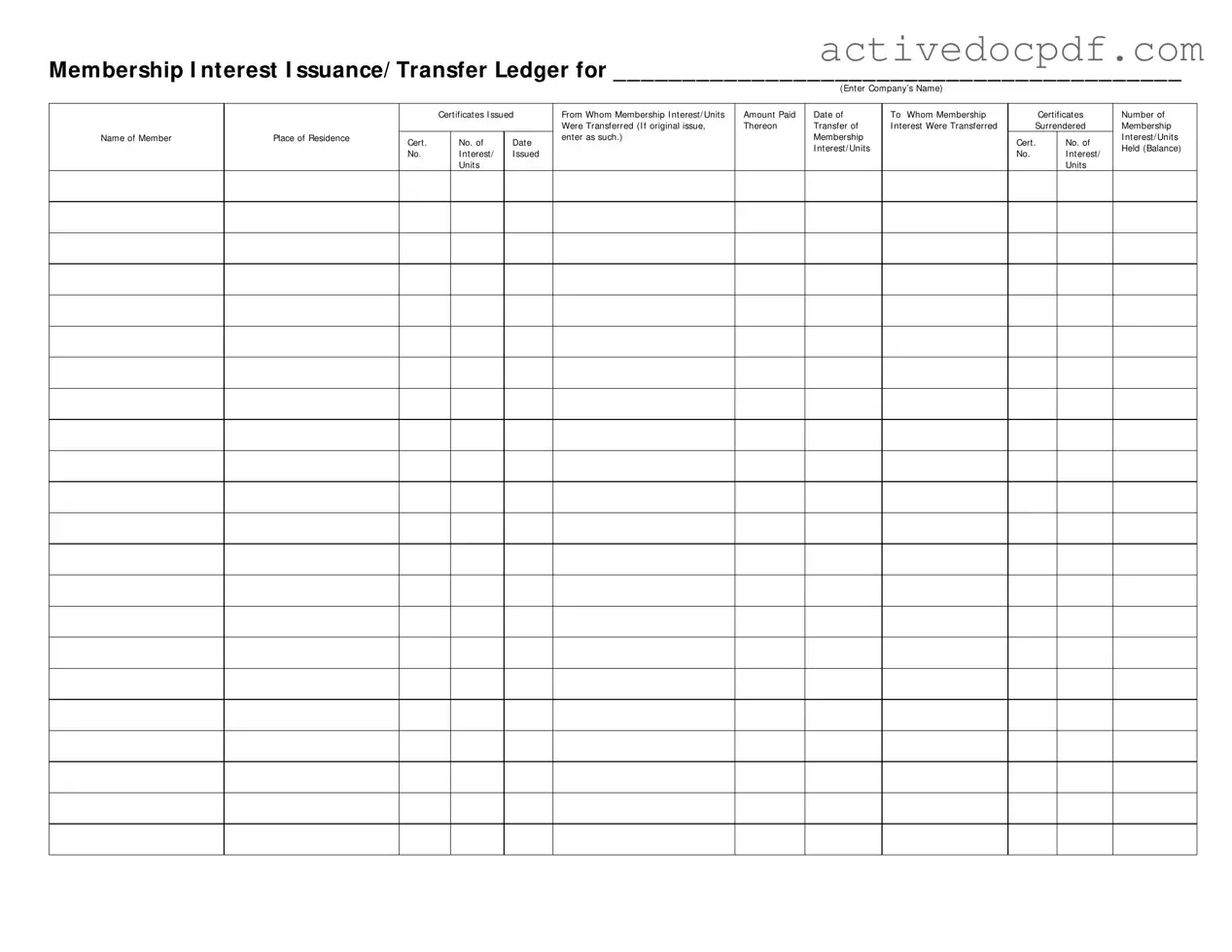The Membership Ledger form tracks the issuance and transfer of membership interests or units within a company. It serves as a record of who holds membership interests, how many they hold, and any transactions involving those interests.
The form requires several key pieces of information, including:
-
The name of the company.
-
Details of certificates issued, including the amount paid and the date of issuance.
-
Information about transfers, including the name of the member transferring the interest, the recipient's name, and the certificate number.
-
The number of membership interests or units held after any transfers.
The responsibility for completing the Membership Ledger form typically falls to the company's secretary or an authorized officer. This individual must ensure that all transactions are accurately recorded and that the ledger is kept up to date.
The Membership Ledger should be updated each time there is a transaction involving membership interests. This includes the issuance of new certificates and any transfers of interests. Regular updates help maintain accurate records and facilitate transparency.
If an error occurs, it is essential to correct it promptly. The incorrect entry should be crossed out or noted, and the correct information should be added. It's important to maintain a clear and accurate record, as inaccuracies can lead to disputes or legal issues.
Yes, the Membership Ledger can be maintained electronically, provided that the electronic format captures all necessary information and is secure. Companies should ensure that electronic records comply with applicable regulations and can be easily accessed for audits or reviews.
While there is no universally mandated format, the form should include all required information in a clear and organized manner. Companies may create their own template, but it must capture the essential details outlined in the Membership Ledger guidelines.
What are the consequences of not maintaining a Membership Ledger?
Failing to maintain an accurate Membership Ledger can lead to several issues, including disputes over ownership, difficulties in transferring interests, and potential legal ramifications. It is crucial for companies to keep this record updated to ensure compliance and protect their interests.
How long should the Membership Ledger be retained?
Companies should retain the Membership Ledger for as long as the membership interests are active. Additionally, it is advisable to keep historical records for a period of time after interests have been transferred or terminated, typically in line with state regulations.
Templates for the Membership Ledger form can often be found online through legal resources or business compliance websites. Companies may also consult with legal professionals to create a customized ledger that meets their specific needs.
